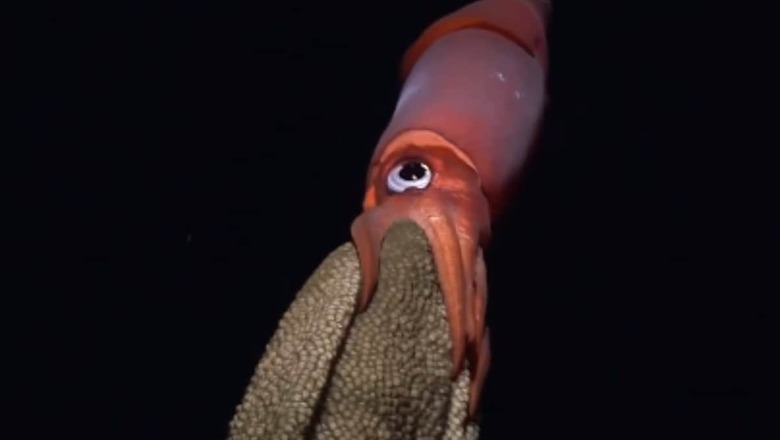
views
A stunning underwater video that shows a female black-eyed squid carrying a large cluster of eggs in its arms, is raking in likes. The black-eyed squid, scientifically named Gonatus onyx, is one of the very few species of squid that brood their eggs for months instead of laying them on the ocean floor. The female black-eyed squids can carry up to 3,000 eggs at a time. The mesmerising clip of the squid was shared on Instagram by Schmidt Ocean Institute, a US-based nonprofit marine research organisation. The video was taken in the deep waters of Costa Rica. So far it has over 28,000 likes.
A post shared by Schmidt Ocean Institute (@schmidtocean)
While sharing the clip, Schmidt Ocean Institute wrote, “One of the few squids that brood their eggs: Gonatus Onyx, seen on a recent OctoOdyssey dive. The large egg mass is suspended from hooks on the squid’s arms, and while carrying it for several months, the cephalopod will go without feeding. Although they are neutrally buoyant (don’t require any effort to float or swim – they can conserve energy by remaining motionless) brooding squid cannot swim very quickly, and may be easy prey for deep-diving marine mammals. Seen off Costa Rica Caballito Outcrop on Dive 625. Video rotated 90 degrees for better viewing on Instagram.”
Commenting on it, an Instagram user wrote, “I thought it was hauling an eel… Can’t believe it’s towing that many eggs.” Another said, “Stunning! I am always in awe of our big beautiful ocean, and all that call it their home. Thanks for sharing!” “Wow I had no idea a cluster of squid eggs looked like that! It looks like an old blanket,” wrote a user.
For a long time, marine biologists believed that black-eyed squid laid their eggs in clusters on the seafloor list of most squids. However, in 2001, Brad Seibel, a postdoctoral fellow at the Monterey Bay Aquarium Research Institute (MBARI), witnessed a black-eyed squid hauling the eggs in deep waters of the Monterey Canyon in California.
A year later he saw the same sight again when MBARI’s submersible was 8,200 feet (2,500 meters) deep in the ocean. Seibel spoke to Science Friday about his second viewing of the black-eyed squid brooding its eggs and said, “We knew that they were neutrally buoyant, meaning they don’t require any effort to float or swim; they can just lay there, but I was just struck by how motionless she was. The fins were barely moving, but the entire egg mass and the animal were horizontal, just hovering completely motionless in mid-water.”
What's your reaction?

















Comments
0 comment